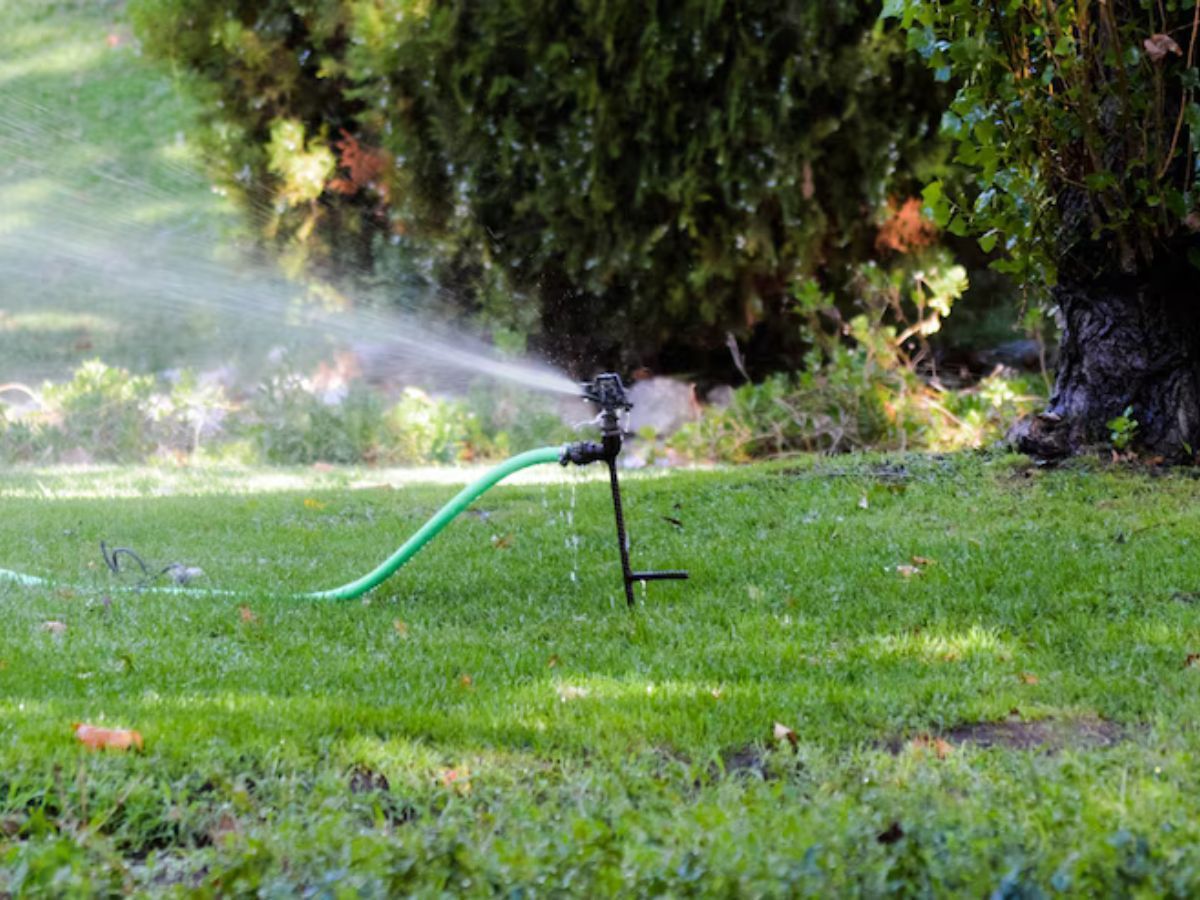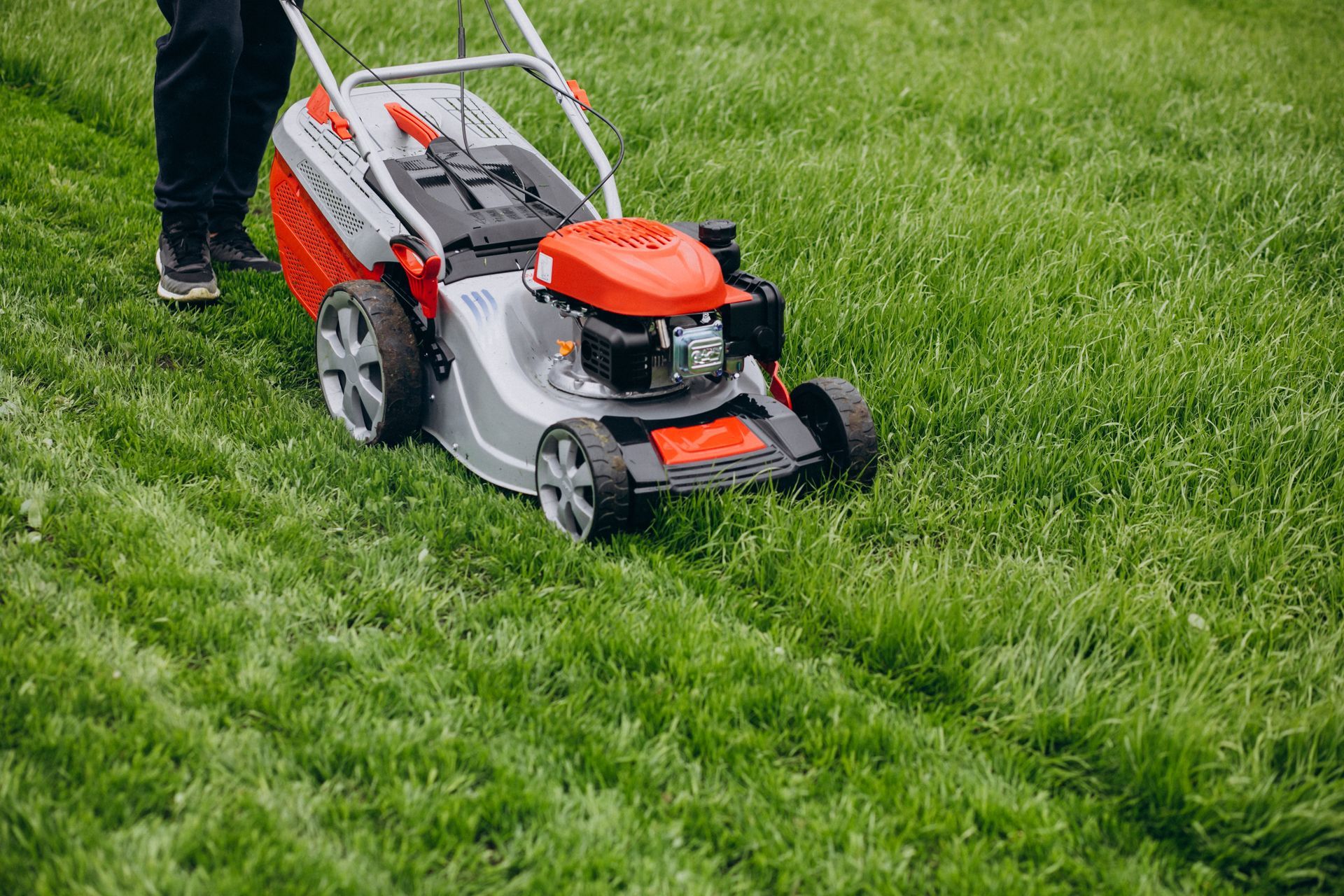Blog

When it comes to transforming your Fresno property, quality and affordability shouldn't be mutually exclusive. At Specialty Landscape, Inc., we've built our reputation on delivering exceptional landscaping services that enhance both the value and beauty of residential and commercial properties throughout the Central Valley. Excellence in Every Project For years, we've served Fresno, Clovis, and surrounding communities with a steadfast commitment to three core principles: excellence, integrity, and customer satisfaction. These aren't just words—they're the foundation of every project we undertake. Comprehensive Landscaping Solutions Our extended range of services covers everything your Central Valley property needs. From landscape design and installation to maintenance, irrigation, and hardscaping, Specialty Landscape, Inc. handles it all with professional expertise. We understand Fresno's climate challenges—scorching summers, water conservation needs, and the importance of drought-tolerant landscaping. Our team designs and maintains outdoor spaces that thrive year-round while staying within your budget. Transforming Outdoor Spaces Whether you're a homeowner wanting a beautiful backyard oasis or a business owner seeking impressive curb appeal, we strive to exceed expectations. Our stunning landscapes don't just look good—they inspire. Contact Specialty Landscape, Inc. today for affordable, quality landscaping services in Fresno and the Central Valley. Let's transform your outdoor space together.

Adding trees to your property does more than improve curb appeal, it creates shade, boosts property value, and transforms your yard into a natural retreat. At Specialty Landscape Inc., we specialize in high-quality tree installation for Fresno homeowners who want both beauty and long-lasting results. Why Trees Matter in Fresno Fresno’s hot summers make trees a smart investment. The right placement can lower energy costs, provide natural cooling, and add privacy to your outdoor space, all while enriching the soil and supporting local wildlife. Our Tree Installation Process At Specialty Landscape Inc., we go beyond just planting a tree. Our team carefully selects species suited to Fresno’s climate, prepares the soil for healthy root growth, and ensures proper spacing and irrigation. The result? Trees that thrive for years to come. Popular Trees for Fresno Yards Shade Trees – Like oak or sycamore, perfect for cooling outdoor spaces. Fruit Trees – Citrus and stone fruit thrive in the Central Valley climate. Ornamental Trees – Flowering varieties add color and character to any yard. Why Choose Specialty Landscape Inc.? With years of experience serving Fresno and Clovis, we bring expert knowledge, professional installation, and a commitment to customer satisfaction. We don’t just plant trees, we create landscapes that grow with you. ✨ Ready to enhance your yard? Contact Specialty Landscape Inc. today for expert tree installation in Fresno, CA.

At Specialty Landscape Inc, we bring local insight and expert care to every project. Landscaping isn’t just about appearances it’s about creating an outdoor space that thrives in your environment and enhances your daily life. Here in Fresno, that means being smart with water, plant selection, and layout. We specialize in eco-conscious landscaping, designing yards that stay lush with minimal watering, using native plants, and optimizing drainage and irrigation systems for maximum efficiency. Our team combines creative design with practical construction to ensure every element from paver patios to planting beds is built to perform and impress. Poor DIY landscaping can cause erosion, wasted water, and endless maintenance. We help you avoid that with a proactive, professional approach. Make your outdoor space an extension of your home. Contact Specialty Landscape Inc today and discover how stress-free, sustainable landscaping can elevate your property.

Sprinkler systems are a crucial part of maintaining a healthy lawn and garden, especially in a hot, dry climate like Fresno, CA. With the intense summer heat and occasional droughts, it's vital to keep your sprinkler system in top shape to ensure your landscape remains vibrant and well-watered. Regular maintenance can help you avoid costly repairs and replacements, ensuring that your sprinklers serve you for years to come. In this blog, we’ll guide you through simple, effective ways to extend the life of your sprinkler system . 1. Regular Inspections Are Key One of the easiest and most effective ways to prolong the life of your sprinkler system is to conduct regular inspections. Walk around your yard every few weeks, especially during the hot summer months, to check for any signs of damage or malfunction. Look for: Leaking heads: If you notice water pooling around certain areas, it could mean that the sprinkler heads are damaged or cracked. Sprinkler heads not popping up: Sometimes debris or dirt can cause sprinkler heads to get stuck. Ensure they are popping up properly when the system runs. Uneven water distribution: If some areas of your lawn are getting more water than others, there might be issues with the pressure or alignment of the sprinkler heads. Catching small issues early can prevent them from turning into costly repairs down the line. 2. Keep the Sprinkler Heads Clean Over time, sprinkler heads can become clogged with dirt, grass, and other debris. When this happens, water distribution becomes uneven, which can lead to overwatering or underwatering certain areas of your lawn. To avoid this, it’s important to clean your sprinkler heads regularly. Here’s how you can do it: Turn off the water supply: Before cleaning your sprinkler heads, ensure the water supply is off to prevent water from spraying while you're working. Remove the head: Gently pull out the sprinkler head from the body. Clean the filter: Most sprinkler heads have a small filter inside them. Clean it using a brush or cloth to remove any dirt, sand, or grass. Check for debris: Make sure that the nozzle is not clogged with dirt or grass. Use a small wire or needle to clear any blockages. By regularly cleaning the sprinkler heads, you ensure that they operate efficiently, delivering water evenly across your lawn. 3. Check for Leaks and Fix Them Quickly Leaks are one of the most common problems that can shorten the lifespan of your sprinkler system. When water escapes through leaks in the pipes, valves, or sprinkler heads, it not only wastes water but also places unnecessary strain on your system. If left unchecked, leaks can lead to higher water bills and long-term damage to your system. To check for leaks, look for the following signs: Wet spots on your lawn: If there are areas of your lawn that are always wet, even when the sprinklers aren’t running, it may be an indication of a leak. Reduced water pressure: If the water pressure in your system seems weak or inconsistent, a leak might be affecting the flow. Puddles near sprinkler heads or pipes: Excess water pooling around these areas is another sign that something is wrong. If you find any leaks, fix them as soon as possible. You may need to replace a cracked sprinkler head, tighten a valve, or patch up a damaged pipe. Keeping up with repairs will help you avoid larger, more expensive issues later. 4. Monitor Your Watering Schedule In Fresno’s dry, arid climate, water conservation is essential. Overwatering your lawn can stress the system and increase wear and tear. On the other hand, underwatering can lead to brown patches and a lack of lush growth. Adjusting your sprinkler system based on seasonal weather conditions is a simple but effective way to extend its life. During cooler months: In the fall and winter, you won’t need to water your lawn as often. Consider reducing the watering schedule to every other day or even once a week, depending on the amount of rain. During summer months: The hot Fresno summers require more frequent watering. However, be mindful of the time of day when you water. Early mornings are the best time to water your lawn to prevent evaporation and ensure that your grass gets the water it needs. Installing a smart irrigation system that adjusts based on the weather is another great way to conserve water and reduce strain on your sprinklers. 5. Adjust Sprinkler Heads for Proper Coverage Over time, sprinkler heads can shift position due to regular use or landscaping activities. This can cause uneven water distribution, resulting in dry patches or overwatered areas. Make sure to check the alignment of your sprinkler heads regularly and adjust them to ensure they cover the intended areas. Check spray patterns: Make sure the water is spraying evenly, especially around the edges of your lawn and garden beds. Adjust spray distances: Sometimes you may need to adjust the range of your sprinkler heads to avoid watering sidewalks, driveways, or other hard surfaces. Properly adjusted sprinklers help maintain an even water distribution, which reduces strain on the system and ensures more efficient use of water. 6. Winterize Your Sprinkler System Winterizing your sprinkler system is an essential step in Fresno, even though winters are generally mild compared to other parts of the country. Freezing temperatures can still cause pipes to crack or burst, which can lead to expensive repairs. To winterize your system, follow these steps: Turn off the water supply: Shut off the main water valve to your sprinkler system to prevent water from freezing inside the pipes. Drain the system: Use the manual drain valves or an air compressor to drain any remaining water from the system. This will prevent the water from freezing and causing damage. Insulate exposed pipes: If your sprinkler system has exposed pipes, insulate them with foam or other insulating materials to protect them from freezing temperatures. By winterizing your system, you reduce the risk of freeze-related damage and help extend the lifespan of your sprinkler system. 7. Upgrade to Efficient Irrigation Technology Modern sprinkler systems offer a variety of smart features that can help you conserve water and improve efficiency. Upgrading to a more efficient system not only benefits the environment but can also save you money on water bills and reduce wear on your system. Smart controllers: These devices adjust your watering schedule based on real-time weather data, ensuring that your lawn gets the right amount of water at the right time. Drip irrigation: For garden beds and flower beds, consider installing drip irrigation, which delivers water directly to the roots of plants, minimizing waste and improving plant health. Pressure regulators: Installing pressure regulators ensures that your sprinkler system operates at the right pressure, preventing water wastage and damage to the system. Investing in these modern irrigation technologies helps ensure your system works efficiently and extends its useful life. 8. Hire a Professional for Annual Maintenance While regular DIY maintenance is important, having a professional inspect and service your sprinkler system at least once a year can prevent major issues from developing. A certified technician will have the expertise to identify problems that might be hard to spot and can perform thorough maintenance, such as: Checking the valves and wiring Inspecting the backflow prevention device Performing a system-wide pressure test Annual maintenance will keep your sprinkler system in optimal condition, preventing costly repairs and ensuring your lawn gets the care it needs year-round. Conclusion A well-maintained sprinkler system is an investment that pays off by keeping your lawn and garden healthy, conserving water, and saving you money on repairs. By following these tips—conducting regular inspections, cleaning sprinkler heads, checking for leaks, and adjusting your watering schedule—you can extend the life of your sprinkler system in Fresno, CA. Whether you handle maintenance yourself or hire a professional, taking the time to care for your system ensures it will continue to keep your landscape thriving for years to come.

Madera, California, with its warm Mediterranean climate and picturesque landscapes, is home to a variety of beautiful trees that thrive in the region. Whether you have towering oaks, vibrant citrus trees, or elegant palms, maintaining healthy trees is essential for both aesthetic and safety reasons. However, many residents in Madera face tree care challenges, including the need for tree trimming in Madera, CA , which can significantly affect the health and longevity of their trees. In this blog, we’ll explore the top seven tree care issues Madera residents encounter and provide practical solutions to address them. 1. Pest Infestations One of the most common challenges homeowners face in Madera is dealing with pests that target trees. Insects such as aphids, scale, and beetles can wreak havoc on tree health by feeding on leaves, bark, or sap, ultimately causing defoliation, stunted growth, or even death. How to Fix It: To prevent pest infestations, it's important to regularly inspect trees for signs of insects. Look for yellowing or curling leaves, visible insects, or sticky residue (a sign of sap). If you notice any signs of pests, try using organic treatments like neem oil or insecticidal soap, which can be effective without harming the environment. For severe infestations, it’s best to call a professional arborist who can identify the issue and recommend safe, effective pest control methods. 2. Water Stress Madera is known for its hot, dry summers, which can stress trees if they don't receive enough water. Overwatering is also a common issue, especially with newly planted trees, as it can lead to root rot and other problems. Both overwatering and underwatering can cause trees to wilt, shed leaves prematurely, or show signs of poor health. How to Fix It: The key to managing water stress is consistency. Trees typically need deep, infrequent watering rather than shallow, frequent watering. A good rule of thumb is to water deeply once a week during the hot months, allowing water to reach the root zone. Make sure the soil drains well, and check for signs of standing water. In periods of drought, ensure that your trees are getting enough hydration, but avoid drowning them with excessive water. Using a drip irrigation system can help regulate water distribution and prevent both over and underwatering. 3. Improper Pruning Pruning is a crucial part of tree care, but many Madera residents make the mistake of improper pruning, which can damage trees and even reduce their lifespan. Common mistakes include cutting too much off, removing too many branches at once, or pruning at the wrong time of year. Over-pruning can leave trees vulnerable to disease and pests. How to Fix It: Prune trees with care, making sure to follow proper techniques. Always use sharp, clean tools to make clean cuts and avoid tearing the bark. For most trees, the best time to prune is in late winter or early spring, before the tree starts actively growing. Avoid cutting off more than 25% of a tree’s branches at once. If you’re not sure how to prune correctly, consider hiring a professional arborist who can safely trim your tree while promoting healthy growth. 4. Tree Root Problems Trees in Madera, like elsewhere, can face root-related issues, such as root rot, shallow roots, or roots growing too close to the surface. Shallow roots are often a result of poor soil conditions or improper watering, and they can lead to instability and reduced nutrient absorption. Root rot, on the other hand, is typically caused by excessive moisture or poor drainage. How to Fix It: To address root-related problems, first ensure your tree is planted in well-draining soil. If you notice shallow roots, try to aerate the soil around the tree to encourage deeper growth. If root rot is present, remove any affected roots, and consider improving the drainage around the tree by adding organic matter to the soil or installing a drainage system. For significant issues, such as a tree becoming unstable due to shallow roots, it may be necessary to consult an expert to evaluate whether the tree can be saved or if it needs to be removed. 5. Tree Diseases Madera’s warm climate can sometimes be a breeding ground for tree diseases, including fungal infections and bacterial issues. Trees suffering from diseases like oak wilt, powdery mildew, or fire blight can show signs of yellowing leaves, wilting, or spots on foliage. If left untreated, these diseases can spread rapidly and severely weaken or kill a tree. How to Fix It: The first step in preventing tree diseases is ensuring proper care, such as adequate watering, fertilization, and pruning. Regularly inspect trees for signs of disease, and remove infected branches immediately to prevent spreading. Applying fungicides or bactericides can help, but make sure they’re appropriate for the specific disease affecting your tree. For persistent or severe disease, it’s best to consult an arborist for advice on treatment options. 6. Overcrowding and Insufficient Space In Madera, where trees are often planted close together to create a lush landscape, overcrowding can become a significant issue. When trees grow too close together, they compete for sunlight, nutrients, and water, leading to stunted growth, poor health, and weakened trees. Additionally, trees planted too close to structures or power lines can cause damage or pose safety risks as they grow. How to Fix It: To prevent overcrowding, make sure to plant trees with enough space to reach their mature size. Always consider the tree’s growth pattern before planting, and leave plenty of room for them to expand without crowding other trees or structures. If you notice overcrowding in your existing landscape, consider selectively thinning the trees. Removing a few trees or trimming branches can help the remaining trees thrive. In some cases, relocating trees to more suitable spots may be an option, but always consult a professional for guidance. 7. Storm Damage and Safety Concerns Madera’s weather can occasionally bring strong winds and storms, which can cause branches to break or even topple entire trees. Storms can also leave trees with leaning trunks or broken limbs, which could pose a safety hazard to your property and loved ones. How to Fix It: To prevent storm damage, regularly inspect your trees for any signs of weakness, such as cracked branches or hollow spots. Prune dead or broken branches before storms hit to reduce the risk of falling limbs. For larger trees, consider having an arborist assess the structural integrity of the tree, especially if it’s near buildings or power lines. After a storm, inspect your trees for damage and remove any hazardous branches. If a tree is severely damaged or leaning, it may need to be removed for safety reasons. Conclusion Taking care of your trees in Madera involves more than just occasional watering or pruning. Being proactive about pests, diseases, water stress, and safety concerns is essential to maintaining the beauty and health of your landscape. Whether you’re dealing with tree diseases, root problems, or the threat of storm damage, addressing these issues head-on with proper care can ensure your trees stay vibrant and healthy for years to come. If you ever feel uncertain or overwhelmed by tree care, don’t hesitate to reach out to a professional arborist who can provide expert guidance and services tailored to your needs. By staying vigilant and taking the necessary steps to fix common tree care challenges, Madera residents can enjoy lush, healthy trees that enhance the beauty of their properties.

If you’re a homeowner in Kerman, CA, you’ve probably thought about enhancing your outdoor space. Whether you’re looking to create a beautiful garden, add hardscaping features, or simply maintain a neat lawn, landscaping services can help bring your vision to life. However, before you hire a landscaping company, it’s important to have an idea of the costs involved. In this guide, we’ll explain what affects landscaping costs in Kerman, CA, and how you can plan for your project without breaking the bank. What Affects Landscaping Costs? Landscaping costs can vary based on several factors. Understanding these factors will help you estimate the price and make informed decisions. Scope of the Project: Are you looking for simple lawn maintenance or planning a complete redesign? The more complex the project, the higher the cost. Size of Your Property: A larger property requires more time and effort, which typically results in higher costs for landscaping services. Materials and Features: Installing features like irrigation systems, patios, walkways, or custom plants will add to your overall costs. Frequency of Service: Regular maintenance like lawn mowing will cost less than a one-time complete overhaul or installation project. Common Landscaping Services in Kerman, CA Here are some common landscaping services in Kerman, CA and how they typically break down in terms of cost and effort. 1. Lawn Maintenance Regular lawn care services are some of the most common landscaping services. These can include lawn mowing, trimming, edging, and seasonal clean-ups. The cost can vary based on how frequently you need services and the size of your lawn. More frequent visits can help keep your yard looking neat and healthy all year long. 2. Garden Design and Installation A garden design project involves planning and installing plants, flowers, shrubs, and even trees. For homeowners in Kerman, selecting drought-tolerant plants that can thrive in the local climate may be part of the design. This service can range from simple flower bed installations to creating an elaborate garden with unique plant species, water features, and landscape lighting. 3. Hardscaping Hardscaping involves adding non-plant elements like patios, walkways, retaining walls, and outdoor kitchens to your landscape. These types of projects tend to require more materials and skilled labor, and they can greatly enhance your yard's functionality and aesthetic appeal. It’s important to choose the right materials to match both the climate in Kerman and your home’s design. 4. Irrigation Systems In a region like Kerman, CA, where water conservation is important, installing an irrigation system can be a great investment. Whether it’s a drip irrigation system for your garden beds or a full sprinkler system for your lawn, these systems ensure that your plants get the right amount of water while reducing waste. A properly installed irrigation system can save you time and money in the long run, especially during the hot summer months. 5. Tree Services Tree care services such as trimming, pruning, or removal can help keep your trees healthy and safe. If you have large trees or trees that need attention, hiring a professional for this service is important. Proper tree care can prevent damage to your property and improve the overall look of your landscape. What You’re Paying For When you hire a landscaping company in Kerman, you’re paying for more than just the plants or materials. Here’s what’s included in the cost: Design and Planning: A professional landscaper will often help you plan your project, including designing layouts, choosing plants, and recommending the best materials for your space. This planning phase is crucial, especially for large or complex projects. Labor: Skilled labor is a significant part of the cost, especially for intricate work or large projects. Landscapers bring in the expertise needed to handle everything from installing irrigation systems to laying down pavers. Materials: The types of plants, stones, or other materials you select can affect the cost. For example, drought-tolerant plants may have a higher upfront cost, but they will save on water bills over time. Tips for Saving on Landscaping Services If you’re working with a budget, there are ways to cut down on landscaping costs without sacrificing the quality of your outdoor space: DIY Some Tasks: You can reduce labor costs by handling small tasks like planting flowers or maintaining your lawn between professional visits. Get Multiple Quotes: Different landscaping companies have different pricing structures. It’s a good idea to get quotes from several companies in Kerman before making your final decision. Start Small: You don’t have to do everything at once. If you’re on a budget, begin with essential services like lawn care and basic garden design, then expand as your budget allows. Consider Water-Efficient Landscaping: Drought-tolerant plants and xeriscaping can lower water costs over time. Plus, these plants are low-maintenance, which means fewer visits from landscapers and less work for you. Conclusion Landscaping in Kerman, CA, covers a wide range of services to suit different needs and budgets. From regular lawn care to elaborate design and installation projects, understanding what affects costs will help you plan accordingly. Keep in mind that prices can vary based on the size of your property, the complexity of the project, and the company you choose. With some research and careful planning, you can create a beautiful and sustainable landscape that adds value to your home and enhances your outdoor living experience. By working with local professionals and considering options that align with your needs, you can achieve the outdoor space you’ve always dreamed of. Happy landscaping!

Living in Sanger, California, means enjoying sunny days, mild winters, and a long growing season. But those hot, dry summers can be tough on your lawn. The key to a beautiful, healthy yard is following the right lawn maintenance schedule all year long. In this guide, we’ll walk you through a simple month-by-month lawn care plan designed just for Sanger homeowner s. Whether you’re doing it yourself or hiring a local pro, this guide will help keep your grass green, your soil healthy, and your lawn looking great. 1. January – Let Your Lawn Rest What to do: January is usually cool and sometimes foggy in Sanger. Grass growth is slow, and your lawn doesn’t need much attention. Tips: Rake up any fallen leaves or debris. Avoid walking too much on a frozen or wet lawn. Sharpen your lawn tools to get ready for spring. Mowing & Watering: No mowing needed. Water only if there’s no rain for 2–3 weeks. 2. February – Plan & Prep What to do: This is a great month to plan for spring. Tips: Test your soil (available at garden stores or local nurseries). Apply a pre-emergent weed control to stop weeds before they grow. Start thinking about any reseeding or aerating for spring. Mowing & Watering: Still very minimal. Mow only if grass is overgrown. 3. March – Wake Up the Lawn What to do: As temperatures rise, your grass begins to grow again. Tips: Fertilize lightly to give your lawn a healthy boost. Aerate compacted soil to let air and water reach the roots. Dethatch if you notice a thick layer of old grass buildup. Mowing & Watering: Mow every 2–3 weeks. Start regular watering if rain is light. 4. April – Green and Growing What to do: April is when your lawn really starts to green up. Tips: Apply a slow-release fertilizer for long-term health. Spot-treat weeds with safe herbicides or pull them by hand. Overseed any bare or thin spots. Mowing & Watering: Mow weekly. Water 1–2 times per week if dry. 5. May – Be Weed-Free and Water-Wise What to do: Temperatures rise in May, and weeds can spread fast. Tips: Continue weed control and mowing. Adjust sprinklers to avoid overwatering or runoff. Add mulch around flower beds to keep soil moist. Mowing & Watering: Mow weekly. Water deeply 1–2 times per week. 6. June – Get Ready for the Heat What to do: June marks the start of Sanger’s dry season. Your lawn needs protection from the heat. Tips: Raise your mower blade to keep grass longer. This shades the roots. Watch for signs of drought stress (like curled or dry blades). Water early in the morning to reduce evaporation. Mowing & Watering: Mow every 1–2 weeks. Water deeply 2 times per week. 7. July – Summer Survival What to do: July is hot and dry. Your main goal is keeping the lawn alive. Tips: Don’t fertilize during extreme heat—it can burn your grass. Consider using lawn soil conditioners if the ground gets too hard. Check for pests like grubs or chinch bugs. Mowing & Watering: Mow less often. Water deeply 2 times per week or more if heat is intense. 8. August – Keep it Cool What to do: August is just as hot as July, but relief is coming soon. Tips: Watch for fungal diseases or brown patches. Avoid heavy yard work during heatwaves. Plan for fall tasks like reseeding or aerating. Mowing & Watering: Mow as needed. Keep up with deep watering 2 times per week. 9. September – Start Fresh What to do: September brings cooler evenings and is the best time to repair your lawn. Tips: Aerate and overseed your lawn now. Apply a fall fertilizer to promote root growth. Begin reducing water slowly as the weather cools. Mowing & Watering: Mow every 1–2 weeks. Water 1–2 times per week, less if it rains. 10. October – Strengthen the Roots What to do: Your grass is still growing, but winter is near. Tips: Apply another round of fertilizer (look for one labeled “winterizer”). Rake up leaves regularly to avoid smothering the grass. Touch up any remaining thin spots. Mowing & Watering: Mow as needed. Water once per week or as needed. 11. November – Clean Up and Slow Down What to do: The lawn begins to slow down and prepare for dormancy. Tips: Remove leaves and branches. Avoid heavy traffic on a wet lawn. Service your mower and tools before storing. Mowing & Watering: Mow every 2–3 weeks if needed. Water only during dry spells. 12. December – Dormant But Not Dead What to do: Most lawns in Sanger are dormant by December. That’s okay! Tips: Continue clearing debris. Don’t fertilize or seed this month. Enjoy your time off—your lawn is resting. Mowing & Watering: No mowing. Only water if the weather is unusually dry. Final Tips for Sanger Lawn Care Success: Use the right grass type: Warm-season grasses like Bermuda or St. Augustine do well in Sanger’s heat. Mow high during summer: Taller grass helps retain moisture and shades the roots. Avoid overwatering: Deep, infrequent watering is better than shallow, daily watering. Adjust for the weather: Rainy weeks? Skip watering. Heatwave? Add a day. Take care of your soil: Healthy soil = healthy grass. Test every 1–2 years. Wrapping Up By following this month-by-month lawn care schedule, you can have a healthy, green lawn all year round—without the guesswork. Sanger’s climate may be tough on grass at times, but with the right steps at the right time, your lawn can thrive. Need help keeping up with lawn care in Sanger? Consider hiring a local lawn service or asking your nursery for region-specific advice.

Spring cleaning is a time when many people tackle the task of decluttering and refreshing their living spaces. It’s a great opportunity to let go of unnecessary items and breathe new life into your home. However, spring cleaning often involves dealing with a lot of clutter, and that’s where junk removal in Fresno can be a game-changer. Junk removal services make spring cleaning faster, easier, and more efficient. Instead of spending your weekend sorting through piles of unwanted items, lifting heavy furniture, or making multiple trips to the dump, a professional junk removal team can handle all the hard work for you. Here’s how junk removal services in Fresno can make your spring cleaning efforts stress-free and effective. 1. Save Time and Energy Spring cleaning can feel overwhelming, especially when you're dealing with years of accumulated clutter. From old furniture to broken appliances, hauling these items yourself takes time, effort, and a lot of energy. By hiring a junk removal service in Fresno , you can focus on other tasks, like scrubbing surfaces, organizing, and redecorating. The professionals will come to your home, remove everything you don’t need, and take care of the disposal. This means you can save your time and energy for the more enjoyable aspects of spring cleaning. 2. Clear Out Unwanted Items Quickly One of the key goals of spring cleaning is getting rid of things you no longer need or use. Whether it’s old clothes, outdated electronics, or large furniture pieces, these items can take up a lot of space in your home. Junk removal services are a fast and efficient way to clear out all these items. When you hire a team of professionals, they’ll show up at your doorstep, sort through your junk, and take everything away. This is much quicker than trying to handle it yourself, allowing you to see immediate results. 3. Declutter Your Home and Create More Space Clutter can make a space feel smaller and more chaotic, even if it’s relatively clean. One of the main benefits of junk removal is that it opens up more room in your home. When you get rid of furniture, broken appliances, and other unwanted items, you create a more organized and spacious environment. This will make your living space feel fresher and more comfortable, which is a perfect way to welcome the new season. 4. Avoid the Hassle of Disposal Figuring out how to dispose of large items can be one of the most difficult parts of spring cleaning. Some items can’t just be thrown away in your regular trash, and hauling heavy furniture or large appliances to the dump is no small task. Junk removal services handle all the logistics for you. They know where to take different types of waste, from recyclables to hazardous materials. Many junk removal companies also partner with donation centers, so usable items can be given a second life rather than ending up in a landfill. This is a huge convenience and a great way to make sure your items are disposed of responsibly. 5. Eco-Friendly Junk Removal Many junk removal services in Fresno focus on eco-friendly disposal. This means they aim to recycle as much of your junk as possible, reducing the amount that ends up in landfills. Items like cardboard, plastic, metal, and glass can often be recycled, while usable furniture and appliances can be donated. By choosing a professional junk removal service, you’re not just clearing out your home—you’re also making an environmentally conscious decision that helps reduce waste and promotes sustainability. 6. Make Your Home Look and Feel Better Clutter can make your home feel cramped and uninviting, even if everything is clean. When you get rid of old items that no longer serve a purpose, your home will instantly look and feel better. Whether it’s in your living room, garage, or backyard, removing unwanted items allows you to create a more welcoming and organized space. You can then focus on other aspects of spring cleaning, like deep cleaning, rearranging furniture, or adding decorative touches that make your space feel refreshed. 7. Get Professional Help Without the Stress While it may seem tempting to tackle junk removal yourself, it often leads to more stress than it’s worth. Renting a truck, gathering a team of friends, and dealing with the logistics can take up an entire day and leave you exhausted. Professional junk removal services make the process seamless. They handle everything from start to finish, so you don’t have to worry about anything. You simply point out what you want to be removed, and they do the rest. It’s an easy and stress-free solution for anyone looking to clean out their home quickly. 8. Affordable and Convenient Many people shy away from hiring junk removal services because they assume it will be too expensive. However, junk removal in Fresno is often more affordable than you might think. Most companies offer transparent pricing based on the amount of junk you need to be removed, so you can budget accordingly. Plus, junk removal services are incredibly convenient. They can come to your home at a time that works best for you, whether it’s during the week or on the weekend. No need to rent a truck, gather supplies, or spend hours doing the work yourself. Conclusion Spring cleaning doesn’t have to be stressful or overwhelming. Junk removal services in Fresno can make the process smoother, faster, and more efficient. Whether you’re clearing out old furniture, decluttering your home, or getting rid of broken appliances, professional junk removal takes the burden off your shoulders. You can focus on the enjoyable parts of spring cleaning, like organizing and redecorating, while leaving the heavy lifting and disposal to the experts. If you want to refresh your space this spring, junk removal is the key to making it happen quickly and easily.






